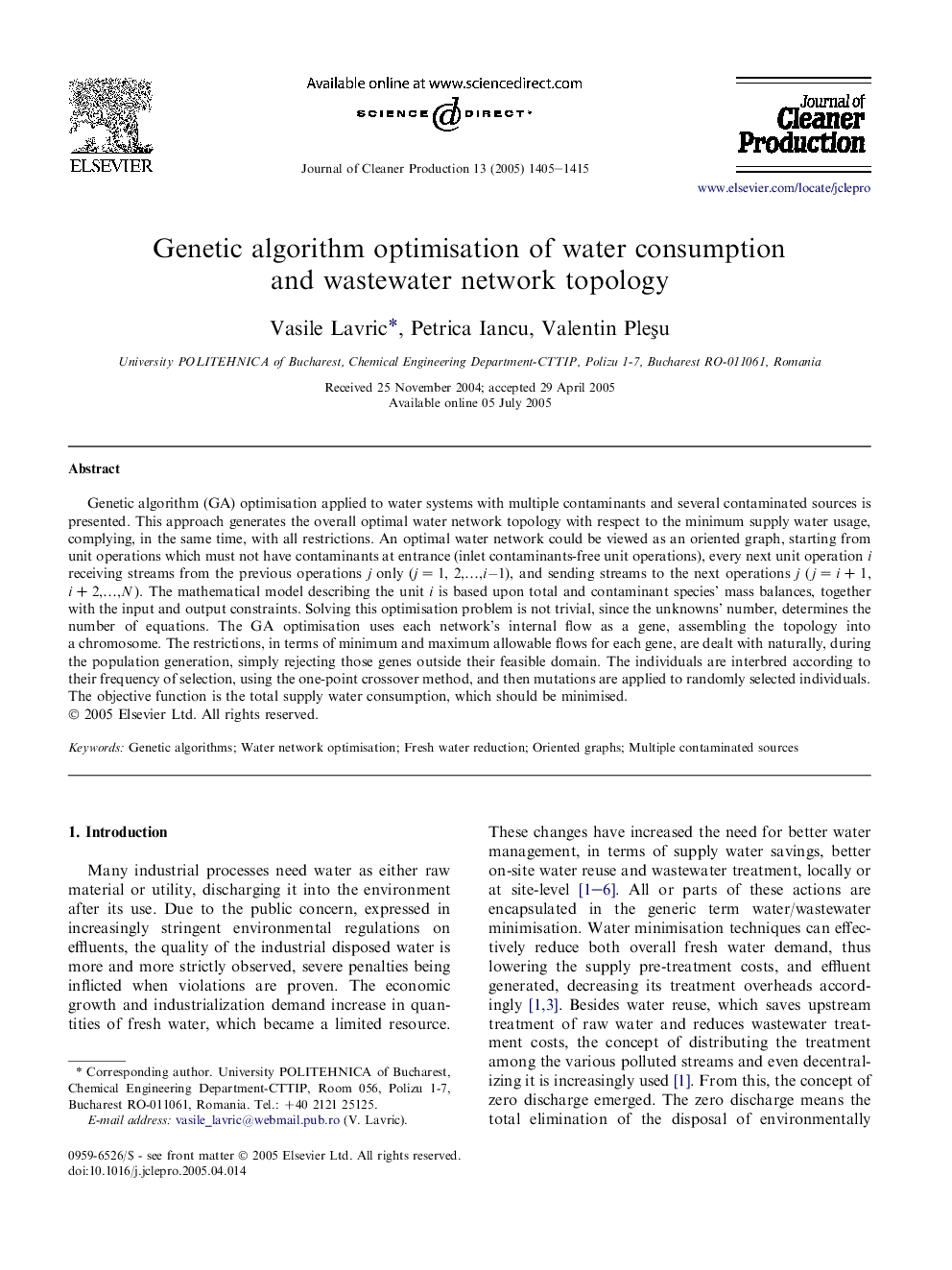| Article ID | Journal | Published Year | Pages | File Type |
|---|---|---|---|---|
| 10688289 | Journal of Cleaner Production | 2005 | 11 Pages |
Abstract
Genetic algorithm (GA) optimisation applied to water systems with multiple contaminants and several contaminated sources is presented. This approach generates the overall optimal water network topology with respect to the minimum supply water usage, complying, in the same time, with all restrictions. An optimal water network could be viewed as an oriented graph, starting from unit operations which must not have contaminants at entrance (inlet contaminants-free unit operations), every next unit operation i receiving streams from the previous operations j only (j = 1, 2,â¦,iâ1), and sending streams to the next operations j (j = i + 1, i + 2,â¦,N). The mathematical model describing the unit i is based upon total and contaminant species' mass balances, together with the input and output constraints. Solving this optimisation problem is not trivial, since the unknowns' number, determines the number of equations. The GA optimisation uses each network's internal flow as a gene, assembling the topology into a chromosome. The restrictions, in terms of minimum and maximum allowable flows for each gene, are dealt with naturally, during the population generation, simply rejecting those genes outside their feasible domain. The individuals are interbred according to their frequency of selection, using the one-point crossover method, and then mutations are applied to randomly selected individuals. The objective function is the total supply water consumption, which should be minimised.
Keywords
Related Topics
Physical Sciences and Engineering
Energy
Renewable Energy, Sustainability and the Environment
Authors
Vasile Lavric, Petrica Iancu, Valentin PleÅu,
